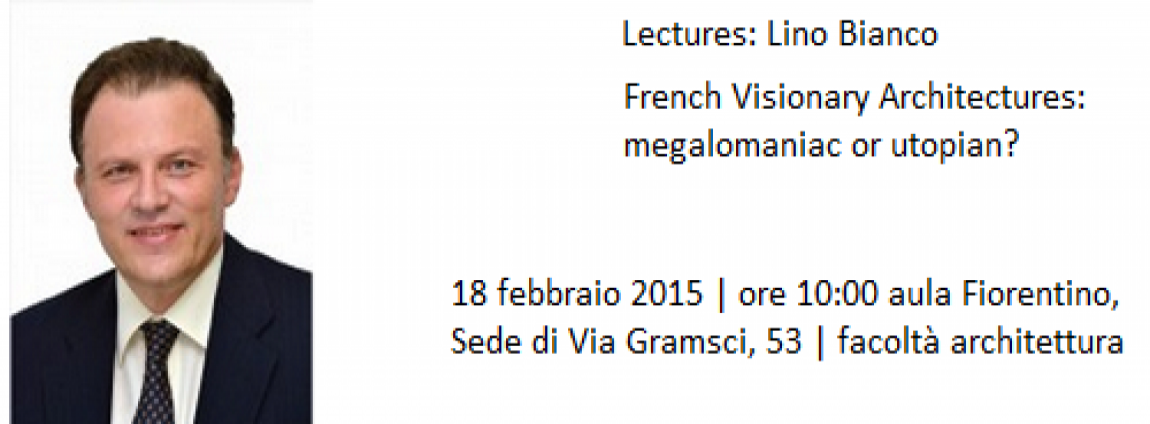Lectures
Su iniziativa del prof. Fabio Quici e della prof.ssa Nicoletta Trasi si rende noto che il prof. LINO BIANCO dell’Università di Malta terrà due lectures nei giorni 13 e 18 febbraio p.v. alle ore 10:00, presso l’aula Fiorentino nella sede di via Gramsci, sui seguenti temi:
venerdi 13_The notion of tolerance in contemporary Sofia
Recent history of Sofia, whether during the first or second half of the Twentieth century, illustrates a concept of tolerance which goes beyond the idea of hospitality, protection and/or restriction. Whether standing up during the Second World War against one of the most notorious regimes in world history or becoming engaged in public consultation and participation associated with preparation of the Master Plan of the city, an unique dynamic collective effort of society at large is at play, the spirit of the city.
Sofia, the projected European Union Capital for the year 2019, has been associated with the Edict of Toleration, an edict issued in Serdica prior to the foundation of the city as Bulgaria’s national capital. This edict had long formed the emotional and spiritual legacy of the city. Indeed, the notion of tolerance is symbiotically linked with the psyche of contemporary Sofia. It forms its soul and imparts its unique identity amongst other European Capitals. The essence of the Bulgarian nation is rooted in a politics of tolerance which transcends other norms and forms of discourse on the subject. Tolerance is embedded in the Bulgarian nation and its national capital is its symbol, it forms part of the spirit of Sofia, the ecumenical city of Europe per excellence.
mercoledi 18_French Visionary Architectures: megalomaniac or utopian?
The ideas of Plato and Aristotle had formed the basis of the philosophical theology of the patristic fathers. The Dei Civitatea Dei was a significant text which dictated urban design as mirroring the heavens. The issue of sacredness of sites has long been the subject of debate and various examples can be cited to this effect. How does it emerge in the work of French visionary architects? The architecture of Boullée, Ledoux and Lequeu is characterized by designs of monumental visions of classical grandeur. They all employed ‘ideal forms’ which symbolizes the divine and perfect order. Geometry and the use of platonic solids was their response.


